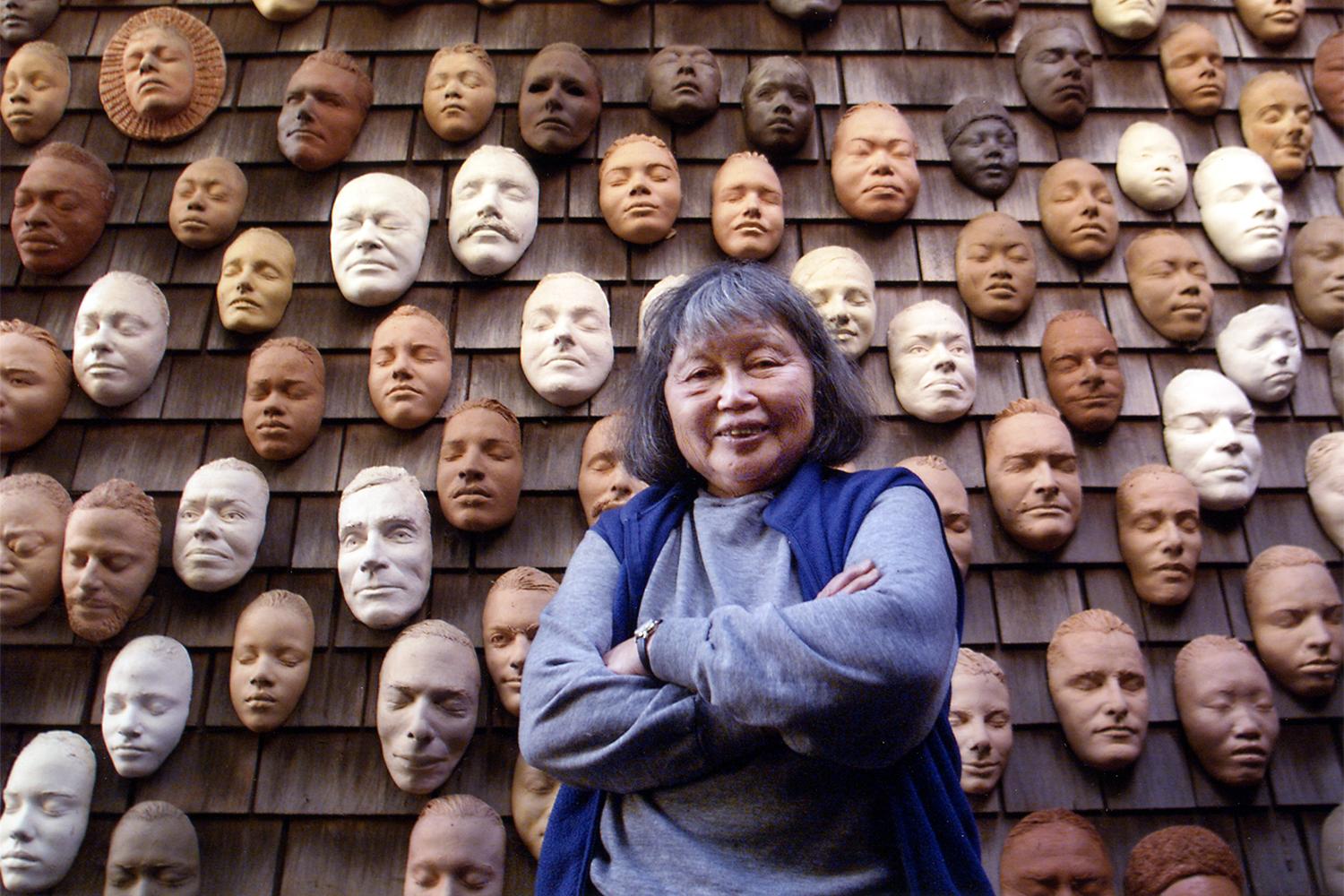By Beth Giudicessi
This article was intended to appear in Fall 2020 Cantor magazine.
The Cantor’s recent acquisition of a collection of clay masks by artist Ruth Asawa further solidifies its reputation as a leading academic and curatorial center for the study of Asian American art and culture, and marks the launch of the Asian American Art Initiative at Stanford, a comprehensive and ongoing effort to acquire, preserve, display, and produce inter-disciplinary scholarship on Asian American artists, and to anchor the university as a primary institution for the study of Pacific Rim cultural exchange.
“This is one of the most exciting acquisitions I’ve been a part of since starting at the Cantor,” said Aleesa Pitchamarn Alexander, assistant curator of American art at the Cantor. “I think the display of this piece, and upcoming research surrounding it, will fundamentally change how people see Ruth Asawa’s artistic practice.” Asawa’s Untitled (Wall of Masks) features 233 life masks made from the faces of her family and friends over 45 years. They were originally displayed on the exterior of her home. “When I cast a face, I know I’m just capturing a minute of a person,” Asawa said. “I like the idea of stopping the moment of a time.”
“She might be best-known for her abstract wire sculptures, but outside of this region, most folks don’t understand what an impact she had on our cultural landscape,” said Alexander, explaining that the wall of masks captures decades of interactions Asawa had with high-profile community members, fellow artists, and K–12 students. This makes it both a moving work of art and invaluable archival document. “The work is a powerful testament to Asawa’s presence in the arts community of the greater Bay Area—she was not just an artist but an advocate and leader. In a time when so many arts communities are in crisis, Asawa’s work reminds us to care for ourselves and each other.”
The artist—who spent time in a Japanese American internment camp in Arkansas and studied at Black Mountain College in North Carolina—recently has been the subject of renewed attention, in part because of a new, best-selling biography researched in Stanford’s archives. The artist’s papers, which chronicle her personal life, creative work, and involvement in shaping arts and educational policy, are available for research in Stanford Libraries; two of her untitled wire constructions, created circa 1954 and 1962, are on view at the Cantor.
The new work joins that of other significant Asian American artists already represented in the Cantor’s collection, including George Miyasaki, Isamu Noguchi, Nam June Paik, Roger Shimomura, Stephanie Syjuco, Toshiko Takaezu, and Martin Wong. Details about the exhibition of Asawa’s masks and activities related to Stanford’s Asian American Art Initiative symposium and exhibitions are forth-coming, part of a distinguished history of presentation and scholarship at the museum dedicated to Asian American art and artists.

